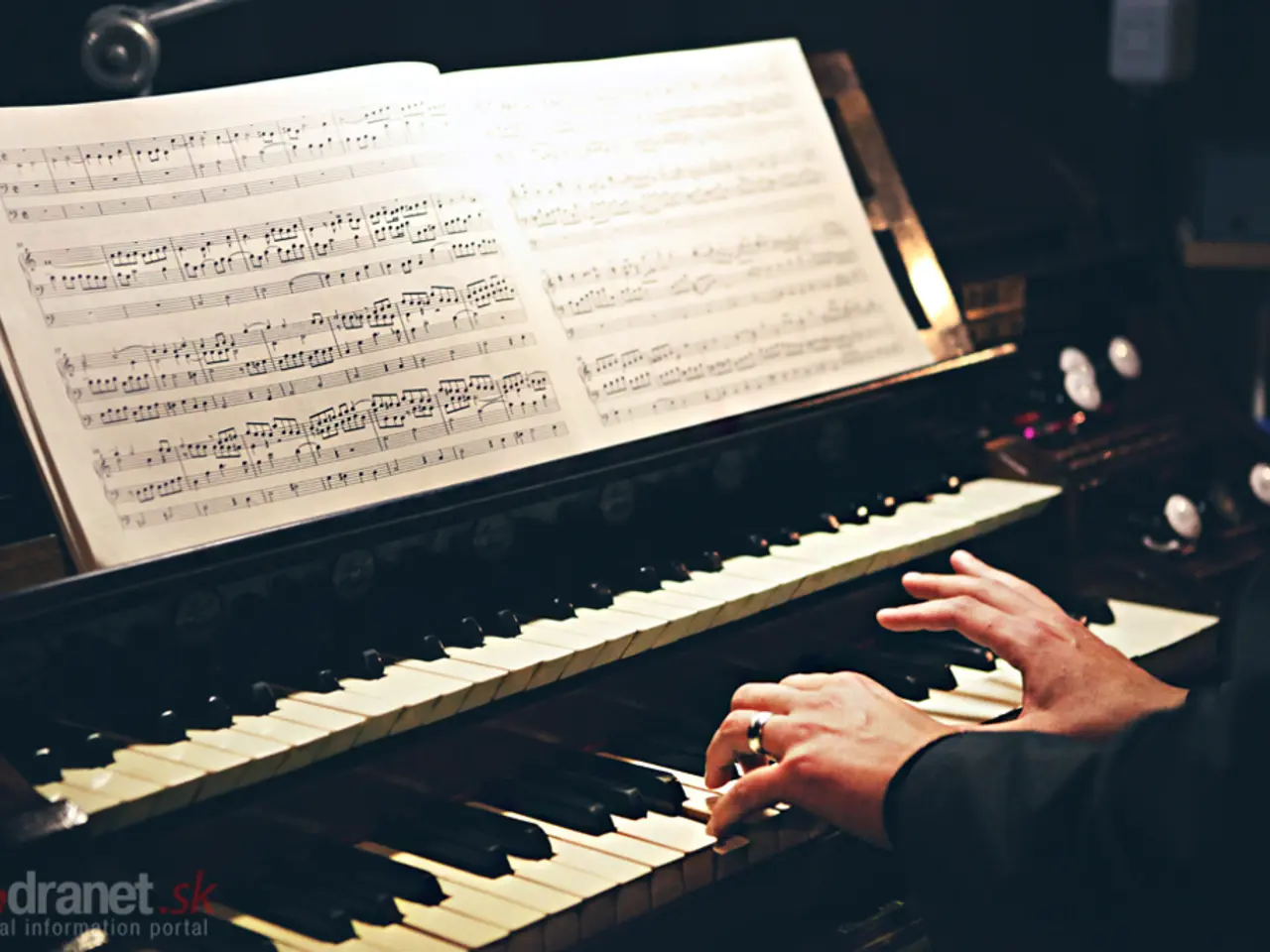Speedy Techniques for Piano Learners to Enhance Sight Reading Skills
Sight reading is a crucial skill for any pianist, allowing them to play a piece of music they've never seen before without prior practice. Here are some effective strategies to help you master sight reading on the piano.
Master Rhythm as the Foundation
Rhythm, often referred to as the "heartbeat of music," plays a vital role in sight reading. Practicing rhythm exercises improves timing and pacing, essential for smooth sight reading. Try working on randomly generated rhythmic patterns with audio accompaniment to build solid rhythmic precision.
Systematically Integrate Melodies
Once you're comfortable with rhythms, it's time to add melodic components. Incorporate customized pitch ranges and intervals into your practice to gradually increase complexity.
Spot Steps and Skips Quickly
Training to recognize intervals between notes, or steps and skips, during practice leads to smoother sight reading. Practice slowly and verbally name the notes while playing to reinforce this skill.
Use Progressively Harder Materials
Select sight-reading exercises or books that match your level but also challenge you incrementally, including varied time signatures and rhythms. ABRSM’s updated sight-reading books are a good resource for this.
Apply Fingering Strategies
Efficient piano fingering during sight-reading helps maintain fluency and avoid hesitation.
Consistent Daily Practice with Variety
Utilizing platforms offering personalized and randomized sight-reading exercises enhances adaptability and maintains motivation.
Break Down Complex Pieces
Divide music into sections based on musical phrases or difficulty, working on each section slowly to master the entire piece incrementally.
Regularly Engage in Music Theory Exercises
Incorporate music theory exercises unrelated to your instrument practice to reinforce theoretical understanding and its application to sight reading.
Understand the Historical and Cultural Context
Understanding the historical and cultural context of the pieces you play can enhance interpretation and add depth to sight reading practice.
Balance Practice with Other Musical Activities
Engaging in activities such as playing for fun, improvisation, and learning pieces by ear can contribute to overall musicality and keep practice enjoyable.
Be Patient with Your Progress
Remember that sight reading is a skill that improves with time and practice. Be patient with your progress and continue to challenge yourself with new and varied material.
Consider Piano Lessons with WKMT
If you're looking for exceptional piano lessons, consider WKMT, a leader in piano education since 2010. Lessons are available in-studio in London or online worldwide.
Mastering sight reading not only saves time but also makes playing the piano more fun and less frustrating. By combining these approaches—rhythm mastery, interval recognition, melodic integration, customized challenges, and fingering strategies—pianists can develop their sight reading skills effectively and steadily.
- Sight reading, which allows a pianist to play a piece without prior practice, is a crucial skill enhanced by effective strategies such as mastering rhythm, interval recognition, and fingering strategies.
- Using platforms offering personalized and randomized sight-reading exercises can help pianists improve adaptability, maintain motivation, and continue mastering the skill.
- Understanding the historical and cultural context of the pieces you play can deepen your interpretation and contribute to a more engaging sight-reading practice.
- If you're serious about improving your sight reading skills, consider seeking guidance from a professional piano educator like WKMT, a leader in piano education since 2010.
- Becoming an exceptional sight reader can save you time, make playing the piano more enjoyable, and open new opportunities for career development and entertainment in music, education-and-self-development, and music theory learning, as well as skills-training in improvisation and other musical activities.




